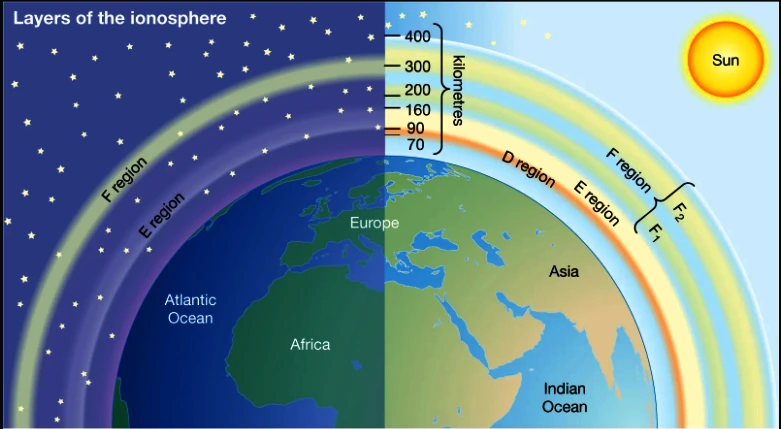Context: The ionospheric density at Bharati station in Antarctica showed variations despite the continuous sunlight in summer and prolonged darkness in winter, as observed over a decade.
Decade-long data from Bharati station released
- A team of scientists from the Indian Institute of Geomagnetism (IIG), have examined the long-term seasonal ionospheric observations at Indian Antarctica station Bharati between 2010 and 2022 and also with solar activity following Sun’s 11-year cycle.
- The study was published in the Journal of Polar Science.
Need for Such Studies
- This kind of long-term studies will help us understand the effects of the ionosphere on satellite-based navigation and communication systems and to mitigate them.
Key Findings of the Study
- Substantial seasonal variation with maximum Total Electron Count (TEC) in equinoctial months followed by the summer and winter have been found.
- Total Electron Count (TEC): The total number of electrons present along a path between a radio transmitter and receiver.
- Equinoctial months: The time when the sun crosses the plane of the Earth’s equator, making night and day of approximately equal length all over the Earth.
- Density in Winter: It was observed that though there was no sunlight incidence throughout the day in winter months (polar nights) at Bharati station, a diurnal pattern was observed with peak ionospheric density near local noon.
- The scientists attributed the peak ionization to particle precipitation and transportation of convectional plasma from high latitudes.
- Density in Summer: The maximum ionospheric density in the summer months where 24 hours sunlight is present (polar days), was about twice more than that of polar nights at the Bharati region.
About Bharati Station
- Bharati is a permanent Antarctic research station commissioned by India on 18 March 2012.
- Aim: to facilitate year-round scientific research activity by the Indian Antarctic program.
- It is India’s third Antarctic research facility and one of two active Indian research stations, alongside Maitri.
- It is located between Thala Fjord & Quilty bay, east of Stornes Peninsula in Antarctica.

|
About The Ionosphere
- Structure: This layer is located between 80 km and 400 km.
- It is not a distinct layer, Instead, the ionosphere overlaps the mesosphere, thermosphere, and exosphere where high-energy radiation from the Sun has knocked electrons loose from their parent atoms and molecules.
 It is divided into three regions or layers: the F-Layer, E-Layer, and D-Layer.
It is divided into three regions or layers: the F-Layer, E-Layer, and D-Layer.
- Ions: The electrically charged atoms and molecules that are formed in this way are called ions, giving the ionosphere its name and endowing this region with some special properties.
- Ionization of Atoms: This layer is characterized by ionization of atoms. It’s a very active part of the atmosphere, and it grows and shrinks depending on the energy it absorbs from the sun.
- It is an electrically conducting region responsible for reflecting radio signals back to Earth.
- Temperature: An increase in Temperature can be witnessed with an increase in height because of radiation from the sun.
- The aurora, or Northern Lights and Southern Lights, occur in the parts of the thermosphere that correspond to layers of the ionosphere.
- Radio waves transmitted from the earth are reflected back to the earth by this layer
Must Read: Antarctica Ice Shelves: 40% Volume Loss In 25 Years
News Source: PIB
![]() 28 Dec 2023
28 Dec 2023
 It is divided into three regions or layers: the F-Layer, E-Layer, and D-Layer.
It is divided into three regions or layers: the F-Layer, E-Layer, and D-Layer.